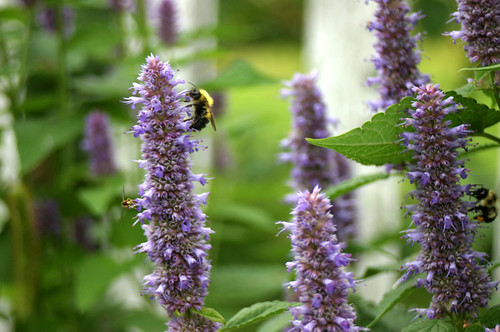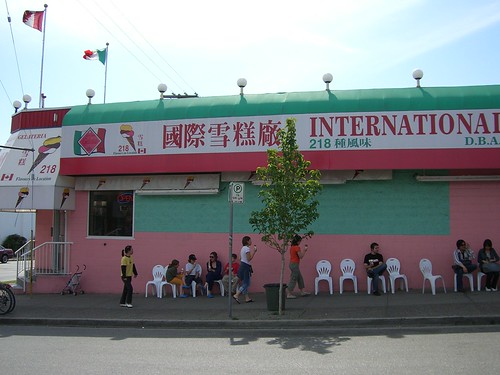
From the moment I met Eau Sauvage, it was steaming passion. It’s sparkling clarity and bold sensuality are seductively well-mannered. Eau Sauvage is what I would want to immediately splash onto a man’s chest and than bury my head into... This would probably be my one recommendation, aside from necessary precautions, for a blind-date gadget (whether if you are a man or a woman)… It radiates good taste and vibrates with a lively charm. Eau Sauvage has the sensuality of clean, freshly showered skin, smooth just-shaved cheekbones, the sweater of a lover left behind for further cuddling and sniffing, permeated with the impeccable scents of sweat sweet hay.
As a side note I may ad: I wasn’t exposed to the Eau Sauvage ads featuring showers and mysterious men just about to take off their black sweater – and was pleasantly surprised to find them fitting to my own internal image of the scent (which is quite unusual in the world of perfume ads).
It wasn’t until I became a perfumer that I learned that the magic charm here lies with the oakmoss. Oakmoss has the power to add a rich, complex underlining base to what otherwise would be just another one of the many fleeting eaux de citrus & herbs. And so while Eau Sauvage is unmistakably sparkling with citrus, it is also one of the first Chypre for men, and actually a revolutionary fragrance in its time.
Eau Sauvage was one of the very few significantly different fragrances for men. The fragrant history around the world (Arabia, India, Ancient Greece and Rome) tells us that men indulged shamelessly in a diverse selection of aromatics: from sweet and indolic flowers (rose and jasmine) to heavily sweet balsams, incense, musk and ambergris. Contrary to that, the modern Western man,
since perhaps the days of Napoleon or even earlier, submitted themselves to a painfully limited palette of aromas: citrus, aromatic herbs, woods and some musk. Anything sweeter, heavier or more floral was reserved for women. Of course – there were a handful of significant and unusual scents for men prior to Eau Sauvage:
Jicky (Guerlain, 1889, considered the first modern perfume but also one that dared to
question the gender boundaries of perfume),
Mouchoir de Monsieur (Guerlain, 1904),
Pour Un Homme (Caron, 1934),
Old Spice (originally released by Shultan in 1937 and was actually marketed for women but happily adopted by men).

What reserves Eau Sauvage such a special place in perfume history are two things: its composition, of course, but also it’s timing. It was released in 1966, a time when men were perhaps ready to start breaking out of the strict olfactory boundaries that locked them in a clean prison of citrus and herbs. Other scents released around this era are
Tabac Original (1959), Chanel’s Pour Monsieur (1955), Pino Silvestre (1955), Monsieur de Givenchy (1959) and Creed’s Cuir de Russie (1953). These paved the path to the revolution of men’s scents, a quiet revolution that is still happening and morphing quietly into a rebel against the exact same things that restricted Western men, olfactory-wise, for the past two centuries. Eau Sauvage was a milestone in breaking out of the norm – starting with the use of substantial amounts of oakmoss and patchouli at the base, and hedione and jasmine in the heart. Only few people at the time knew that the Maestro had an even more revolutionary scent in stock – the one reserved for his wife Therese (designed for her earlier, in 1960). In Eau Sauvage, Roudniska used only a bare amount of the hedione comparing to his masterpiece for his wife, and none of the aquatic melony notes used in Le Parfum de Therese. But the use of citrus and basil and an expanding jasmine heart created a very similar effect, yet one that was be more easily acceptable by his audience.

Another departure from the norm was its mass appeal to both men and women. Since the release of Jicky, there wasn’t as much olfactory “gender-confusion”, and everybody felt comfortable stealing each other’s cologne, as long as it was Eau Sauvage. Diorella was sooon to follow, perhaps to shut down the cologne-kidnapping complaints and cologne-custody court battles that followed Eau Sauvage and threatened to break too many marriages… Diorella was a toned down version of Le Parfum de Therese, and a floraler version of Eau Sauvage (more hedione, and more jasmine, with the addition of melon). Where Diorella failed (marketing wise), other houses gained and started releasing many more unisex scents ever since –
O de Lancome (1969), Diptyque’s l’Eau (1968), Santa Mari Novella’s
Melograno (1965), Goutal’s
Eau d’Hadrien (1981) – and than the explosion (or shall we say inflation?) in unisex fragrance in the 90’s, accompanying and/or following
Calvin Klein’s One (1994).
The use of basil, citrus and oakmoss is genius, and along with the jasmine, considering it’s time, it is also daring. To me it will always stay at the top – the epitome of masculine fragrances, and fragrances at large.

Top notes: Lemon, Pine, Lime
Heart notes: Basil, Jasmine, Carnation
Base notes: Oakmoss, Patchouli, Musk, Hay
Image credits:
Posters from VintagePosterArt.comBottle image from
Dior.com








